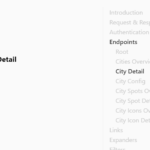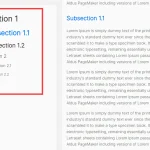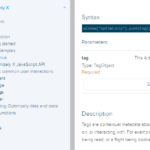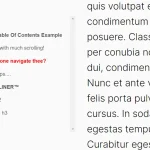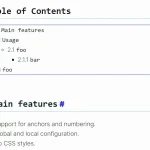| Author: | erfanmola |
|---|---|
| Views Total: | 3,518 views |
| Official Page: | Go to website |
| Last Update: | November 18, 2019 |
| License: | MIT |
Preview:

Description:
A small pure JavaScript scrollspy library that automatically highlights navigation items based upon scroll position to indicate which content section is currently active in the viewport.
Ideal for creating a floating table of contents (in-page navigation) for your long web page that activates the links based on the scroll position of the content for the navigation link.
The library also provides a smooth scroll functionality that enables the visitor to smoothly scroll through content sections by clicking the links in the navigation.
How to use it:
1. Insert the stylesheet ScrollSpy.min.css and JavaScript ScrollSpy.min.js into the document.
<link rel="stylesheet" href="ScrollSpy.min.css" /> <script src="ScrollSpy.min.js"></script>
2. Add the CSS class .scrollspy to the content sections and define the section name in the spy-title attribute.
<section class="scrollspy" spy-title="Section 1"> Section 1 </section> <section class="scrollspy" spy-title="Section 2"> Section 2 </section> <section class="scrollspy" spy-title="Section 3"> Section 3 </section> ...
3. Create a container to hold the table of contents (in-page navigation).
<div id="indicator"></div>
4. Enable the scrollspy functionality.
var spy = new ScrollSpy();
5. Generate links in the table of contents (in-page navigation).
var indicator = document.getElementById('indicator');
spy.Indicator({
element: indicator
});6. Override the default CSS selector. Default: ‘scrollspy’.
var spy = new ScrollSpy({
contexts_class: 'scrollspy'
});7. Set the time to wait between detecting scrolls. Default: 200ms.
var spy = new ScrollSpy({
delay: 100
});8. Event handlers.
var spy = new ScrollSpy({
allbackOnChange: function callbackOnChange() {
// called on each change
},
callbackOnDestroy: function callbackOnDestroy() {
// called on destroy
}
});9. Customize the table of contents (in-page navigation).
spy.Indicator({
element: null,
indicator_container_class: '',
indicator_item_class: '',
clickable: true,
forceActive: false
});


